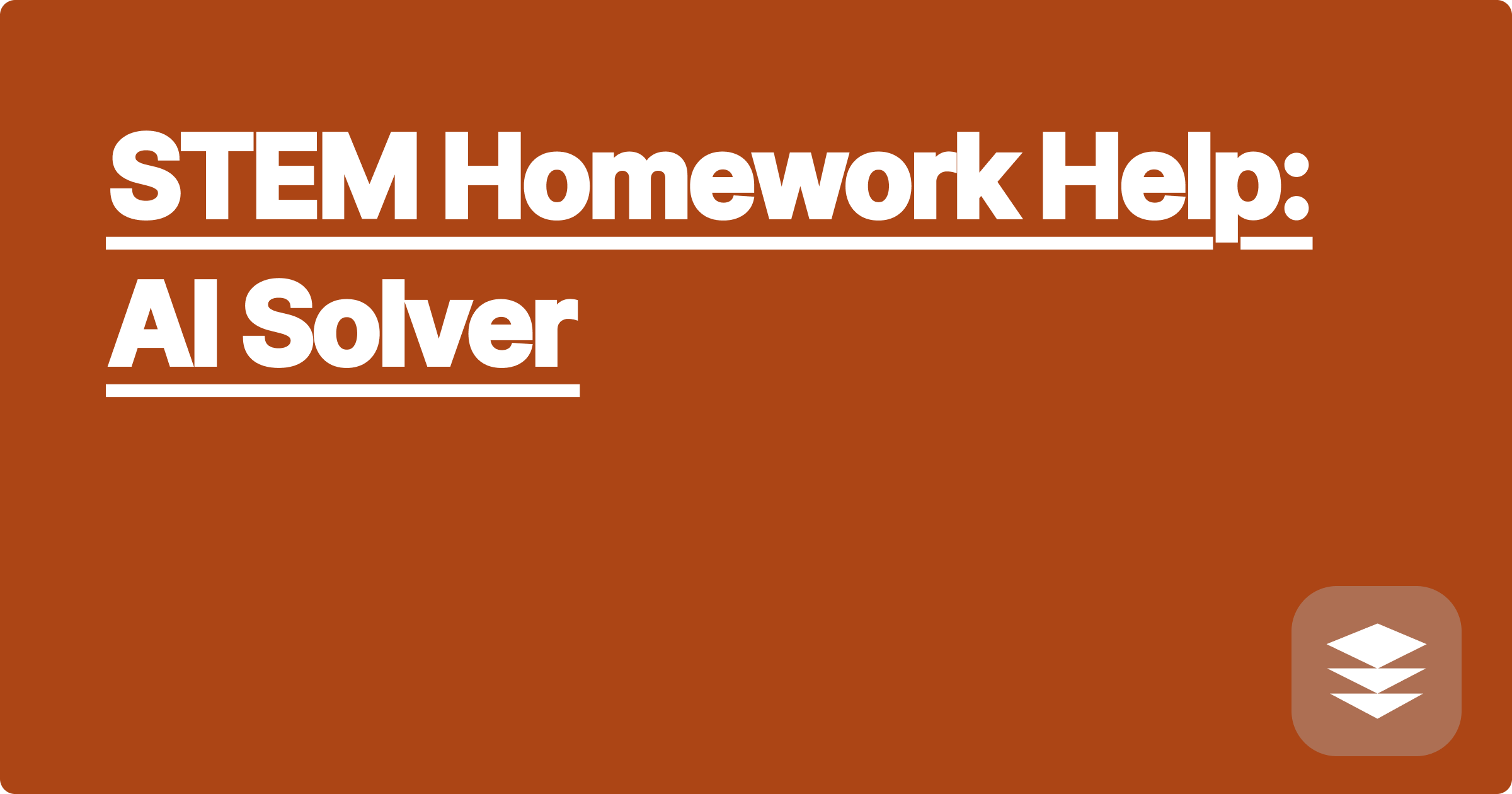
The ever-increasing complexity of STEM fields presents a significant challenge for students and researchers alike. Grappling with intricate mathematical equations, complex coding algorithms, and dense scientific literature can be overwhelming. Fortunately, the rise of artificial intelligence offers a powerful new set of tools to help navigate these challenges. AI-powered solvers can provide valuable assistance in understanding complex concepts, generating solutions, and accelerating the research process.
This emerging technology has the potential to revolutionize how we approach STEM education and research. By leveraging AI, students can gain a deeper understanding of difficult subjects, improve problem-solving skills, and enhance their overall academic performance. Researchers can utilize AI to automate tedious tasks, analyze large datasets, and explore new avenues of inquiry. The ability to harness the power of AI is becoming increasingly crucial for success in the rapidly evolving landscape of STEM.
STEM fields often require solving complex problems involving intricate calculations, data analysis, and abstract reasoning. For instance, a student might struggle with a differential equation in physics, a researcher might face challenges analyzing genomic data, or an engineer might need to optimize a complex algorithm. These challenges can be time-consuming and require a deep understanding of underlying principles. Furthermore, the sheer volume of information and the rapid pace of advancements in STEM fields can make it difficult to stay up-to-date and master the necessary skills. Traditional learning methods often fall short in providing the personalized support and efficient solutions needed to overcome these obstacles.
AI tools like ChatGPT, Claude, and Wolfram Alpha offer innovative solutions to these challenges. ChatGPT and Claude can provide step-by-step explanations of complex concepts, generate code snippets, and even assist in drafting research papers. Wolfram Alpha excels in symbolic computation, data analysis, and providing comprehensive knowledge across a wide range of STEM subjects. These tools can be accessed through user-friendly interfaces, making them readily available to students and researchers of all levels. By leveraging the power of natural language processing and machine learning, these AI assistants can understand and respond to complex queries, providing personalized support and guidance.
To effectively use these AI tools, one should first clearly define the problem. This involves identifying the specific question, equation, or concept that needs to be addressed. Next, the problem should be framed in a clear and concise manner, suitable for input into the AI tool. For example, if using Wolfram Alpha to solve an integral, the equation should be entered using the correct syntax. If using ChatGPT or Claude to understand a concept, the question should be phrased in a way that elicits a comprehensive explanation. After inputting the query, carefully analyze the output provided by the AI. Verify the results, understand the reasoning behind the solution, and explore any alternative approaches suggested by the tool. Finally, integrate the AI-generated insights into your own work, ensuring proper attribution and critical evaluation.
Consider a student struggling to understand the concept of eigenvalues and eigenvectors in linear algebra. They could use ChatGPT or Claude to request an explanation, providing examples and practical applications. The AI could then generate a detailed explanation, illustrating the concept with concrete examples and demonstrating how to calculate eigenvalues and eigenvectors for a given matrix. Another example could involve a researcher analyzing a large dataset of protein interactions. They could use Wolfram Alpha to perform statistical analysis, identify correlations, and visualize the data. Furthermore, a student working on a coding project could use ChatGPT to generate code snippets for specific functionalities, saving time and effort. For instance, they could ask for a Python function to calculate the factorial of a number or a MATLAB script to plot a 3D graph.
To maximize the benefits of AI in STEM education and research, it’s crucial to develop a critical and discerning approach. Don't rely solely on AI-generated answers; instead, use them as a starting point for further exploration and understanding. Always verify the results and ensure they align with established principles and theories. Furthermore, actively engage with the AI tools by asking clarifying questions and exploring different perspectives. This interactive approach will help solidify your understanding and develop critical thinking skills. Finally, remember that AI is a tool to augment, not replace, human intellect. Combine the power of AI with your own creativity, intuition, and critical thinking to achieve optimal results.
In conclusion, AI-powered solvers offer a transformative approach to STEM education and research. By understanding the capabilities and limitations of these tools, and by adopting a critical and engaged approach, students and researchers can unlock their full potential. Embrace the power of AI to enhance your learning, accelerate your research, and navigate the complexities of the STEM world. Start exploring these tools today and discover how they can empower you to achieve your academic and professional goals.
Ace STEM Exams: AI Study Planner
AI for Lab: Data Analysis Made Easy
Master STEM: AI-Powered Flashcards
Coding Help: AI Debugging Assistant
AI in Engineering: Simulation Power
Exam Prep: AI Practice Questions
Math Solver AI: Get Unstuck Now!